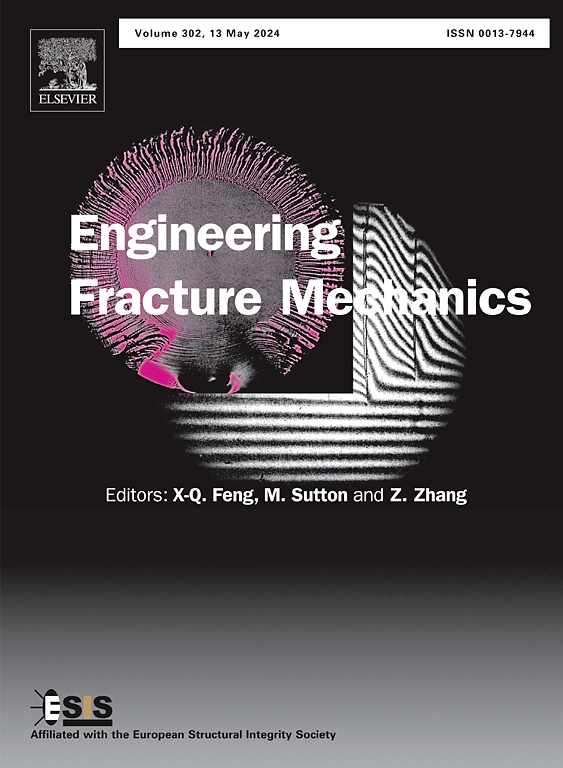基于梯度损伤模型的平面压缩试验稳定性及分岔分析
IF 4.7
2区 工程技术
Q1 MECHANICS
引用次数: 0
摘要
本文给出了二维单轴压缩试验稳定性和分岔分析的解析解。我们建立了由单轴压缩试验得出的断裂角值与稳定性和分岔准则之间的关系。通过本研究,介绍了瑞利比的最小化方法。该结果可作为一种实用的工具,从断裂角度来识别所研究案例的稳定状态。这项工作是基于断裂的变分方法,即以材料软化和不稳定为特征的相场模型。没有单边效应的标准相场模型无法区分拉伸和压缩裂缝,导致非物理模式。拉压分裂模型可以作为一种替代方法,由于剪切模式的存在,引入了断裂角度。利用COMSOL Multiphysics软件对二维光束的压缩过程进行了数值模拟。数值计算结果与解析计算结果吻合较好,验证了稳定状态所对应的断裂角的条件和分岔的可能性。本文章由计算机程序翻译,如有差异,请以英文原文为准。
Stability and bifurcation analysis in the plane compression test with gradient damage models
In this paper, we present an analytical solution for the stability and bifurcation analyses in 2D uniaxial compression tests. We established a relation between the value of the fracture angle resulting from the uniaxial compression test and the stability and bifurcation criteria. Through this study, a minimization of a Rayleigh ratio is introduced. This result serves as a practical tool to identify the stable state of the studied case from its fracture angle. This work is based on the variational approach to fracture, i.e., the phase field models that are characterized by material softening and instabilities. The standard phase-field model without unilateral effects fails to distinguish between tensile and compressive fractures, leading to non-physical patterns. Tension–compression split models can be an alternative, introducing a fracture angle due to the presence of shear modes. Numerical simulations of a 2D beam under compression were conducted using COMSOL Multiphysics. The numerical results are in agreement with the analytical ones, verifying the condition imposed on the fracture angle corresponding to stable states and the possibility of bifurcation.
求助全文
通过发布文献求助,成功后即可免费获取论文全文。
去求助
来源期刊
CiteScore
8.70
自引率
13.00%
发文量
606
审稿时长
74 days
期刊介绍:
EFM covers a broad range of topics in fracture mechanics to be of interest and use to both researchers and practitioners. Contributions are welcome which address the fracture behavior of conventional engineering material systems as well as newly emerging material systems. Contributions on developments in the areas of mechanics and materials science strongly related to fracture mechanics are also welcome. Papers on fatigue are welcome if they treat the fatigue process using the methods of fracture mechanics.

 求助内容:
求助内容: 应助结果提醒方式:
应助结果提醒方式:


